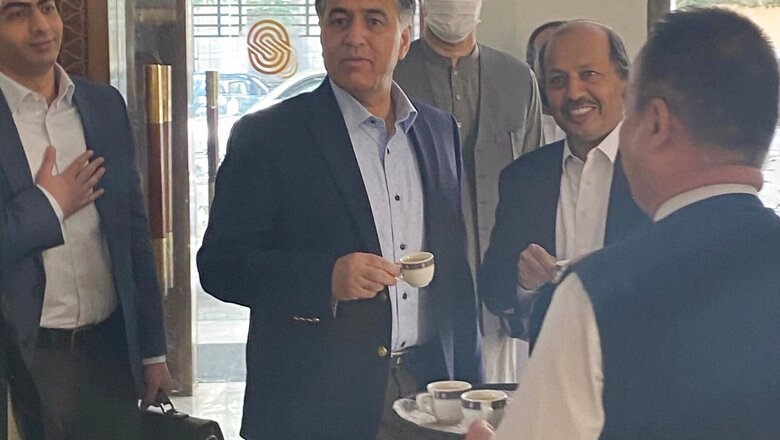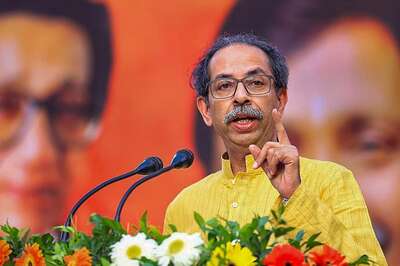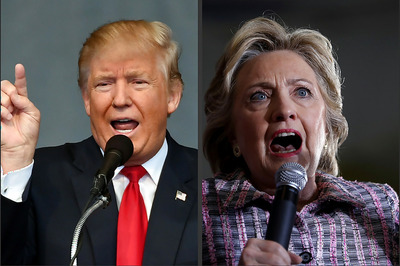
views
Pakistan’s role in raising, nurturing, promoting and providing shelter, safe havens, training and logistics for the Taliban is an open secret acknowledged by just about everyone other than Pakistan. No so obvious or well realized is the covert hybrid war it has conducted against Afghanistan over 20 years from the end of 2001 until the eventual military takeover by the Taliban with barely concealed Pakistani military, technical, logistical, intelligence, satellite and other assistance, and the participation of Pakistani and foreign/regional jihadi outfits, and at key stages, most obviously in the Panjshir operation, Pakistani regulars.
What defies belief is that such a vast operation executed over 29 years—if we include the first phase of the Taliban since they were raised in Afghan refugee camps in Pakistan from 1992—but particularly since 2002 should have gone un-noticed by Western intelligence or un-censured by Western governments. With their takeover of Afghanistan, the Taliban jihad against ‘foreign occupation’ is not over. It is only mutating. Though one can’t rule out an attempt to gain internal legitimacy through more sensitive governance, judging by their conduct so far, including reports of resettlement of Pashtuns in minority areas in Panjshir and Daikundi, the odds are that it will turn inwards against freedom-loving Afghans and outwards against the region. As the West, China and Russia need Pakistan once again as a frontline state for their varying interests, the danger that Pakistan’s role will remain shrouded in the shadows, with no one willing to reveal a dirty family secret, remains. This is likely to have profound consequences for not only the region but also the West.
To understand what future direction the Taliban is likely to take and prepare ourselves for it, it is useful to trace how the Taliban have changed from their origins in the madarsas and refugee camps on the Pakistani side of the Durand Line between 1992-95 through its rule in Afghanistan from 1995-2001 (Taliban 1.0); to its relocation in Pakistan after they were driven out of Afghanistan by the US and Northern Alliance post 9/11 from 2002-21(Taliban 2.0) when they regrouped as a radicalized insurgency using suicide and other forms of terrorism; to their new incarnation as a victorious force and new ‘government’ in Kabul in September 2021. Now that it is in power, the new Taliban government should correctly be seen not as Taliban 2.0 as it was during its insurgency phase, but as Taliban 3.0 with a new agenda. What could be that agenda?
Now that it is in power, the new Taliban government should correctly be seen not as Taliban 2.0 as it was during its insurgency phase, but as Taliban 3.0 with a new agenda.
Pakistan’s Objectives
While it is not clear if the Taliban takeover was a planned operation hatched by the ISI into its eventual form from the outset, Taliban 2.0 certainly grew in scale, ambition and sophistication since about the mid-2000s when the US interest in Afghanistan started wavering in favour of the remaking of the Middle East by the so-called ‘Neo-cons’ starting with Iraq. The ISI knew that all it had to do was outlast the US, ensure that Afghanistan could never stand on its own feet and be strong enough to threaten Pakistan, and terrorize the Afghan population through a violent war of attrition into submission by the time the US left. It worked for that end. It was a complex operation with several components executed with patience to a near perfect demonstration of Sun Tzu’s maxim of ‘winning a war without fighting’ with one difference, Pakistan’s trademark use of terrorism. It was very much a work of the Mullah-Military combine.
ALSO READ | The Threat of Islamic Terrorism Has Only Increased In 20 Years After 9/11
Its first instrument was religious indoctrination of madarsa students on the Pakistani side of the Durand Line that had already commenced in nascent form in the refugee camps and madarsas that mushroomed across the Durand Line and deeper into Afghanistan with the anti-Soviet jihad, with the help of radical Gulf charities and raised as ‘Taliban’ from the mid-1990s. These madarasas were now repurposed as recruiting grounds for Taliban insurgents and IED, intelligence, commando or suicide squads, organized into cells, and mobilized both as militants and suicide bombers into Afghanistan. Even a back of the envelope calculation of the numbers of suicide bombers that would be required to staff such an operation would run into thousands if not tens of thousands.
This was accompanied by a radicalization of religious teachers and preachers in Pakistan and Afghanistan fusing Pakistani ‘neo-Deobandi’ Islam with Wahabism imported from Saudi Arabia to radicalize Afghans and prepare the ground for Islamism over what we may call ‘Afghaniyat’ or Afghan nationalism, symbolized today in the ‘war of flags’ and colours—the tri-coloured Afghan flag and colourful women’s dresses representing Afghanistan’s national diversity, and the black and white Taliban flag and black robes of Taliban women representing a puritanical uniformity.
One of the primary objectives behind the creation of the Taliban was to both use and erase their Afghan and Pashtun identities to enlarge their base but also to submerge them within a larger radical Islamist identity of the Ummah under an ‘Emirate’ headed by an ‘Amir-ul-Momineen’ (leader of the faithful) with blurred ethnic and territorial boundaries that could help bring both other Afghan ethnicities and the wider Islamic population in the region extending from Central Asia to South Asian within its umbrella. While the first objective is still in the making, the second will be given a big fillip with the Taliban victory over the US.
A second objective behind the raising of the Taliban was simply to keep Afghanistan isolated, push it socially and economically into the dark ages in the name of Islam, and bring Afghanistan and Central Asia under Pakistani sway. That did not succeed, but it was not accidental that only three countries recognized the Taliban government from 1996-2001. Pakistan wanted it that way. Although Pakistan today talks of ‘geo-economics’ as a guiding force in its foreign policy with China as the economic muscle, there was absolutely no reconstruction of the destruction caused by the intra-Mujahideen fighting of the mid 1990s, let alone ‘development’. Afghanistan was frozen in time, with even wealthy Gulf charities only interested in their religious and social agenda.
The radicalization of Afghan religious students and teachers in Pakistan and Afghanistan was followed up by a planned programme of infiltration, sleeper cells and shadow governments built over a period of time through fear and intimidation and summary dispensation of justice to develop intelligence and strengthen its grip over areas increasingly out of government control. It used information warfare and social media internally and externally on a massive scale capitalizing on the mistakes and excesses of the US and weak, corrupt and predatory government of the Afghan political elite and creating a narrative of authentic if rustic sons of the soil fighting foreign occupation and values. Several western sympathists became vehicles of this makeover that has fooled many.
The radicalization of Afghan religious students and teachers in Pakistan and Afghanistan was followed up by a planned programme of infiltration, sleeper cells and shadow governments built over a period of time through fear and intimidation.
But easily, the most potent instrument in the armoury of the Pakistani ISI and the Taliban was its very sophisticated psychological operations using escalating levels of terrorism to wear down resistance among the Afghan people already tired of 40 years of foreign intervention, internecine fighting, repressive Taliban rule and Pakistani-sponsored terrorism and create an image of invincibility and inevitability. This applied both in the countryside where identification with the corrupt political elite was limited to tribal or ethnic ties, and towns, particularly Kabul, that were special targets for suicide attacks and complex operations against hospitals, schools, mosques, civil society and media, so that there was virtually no resistance to the Taliban when they moved in for the kill. Even foreign Embassies, especially the Indian Embassy was not spared such attacks that were attributed to the Haqqani Network at the bidding of the ISI.
Combined with this were intelligence operations and assassinations targeting those most capable of leading a resistance against the Taliban and Pakistan starting with Ahmad Shah Massoud himself two days before 9/11 but including such figures as former President of Afghanistan, Burhanuddin Rabbani, Police Chief and later Governor of Kandahar, Gen. Abdul Raziq, doughty fighters like Mutalib Bek in Taloqan, Abdul Jabbar Qohraman in Helm and, and countless others, including unsuccessful attempts against one-time intelligence chiefs, Amrullah Saleh and Asadullah Khaled. Khaled survived but was wounded for life.
Pakistan’s Strategy: Political & Diplomatic
All these strategies were deployed within a skillful diplomatic and political strategy that too had many components. It deceived the US in its war on terror by cooperating with the US in allowing its territory to be used for ground lines of communication and intelligence operations for the US war on terror, for which it was well compensated, while simultaneously using the Taliban as a proxy force to attack the US forces and targets killing close to 2,500 US troops, and eventually forcing and shaping a withdrawal deal between US and the Taliban that virtually handed over Afghanistan to the Taliban and Pakistan in time for the final stages of the US withdrawal for the Taliban to take over Afghanistan by force.
An equally important part of Pakistani strategy was to use all the instruments at its disposal including blackmail and victimhood, to reinforce the US’s own definition of its intervention in Afghanistan purely in terms of its counter-terrorism (CT) objectives against Al Qaeda to limit the US investment in Afghanistan to a Special Forces CT and counter-insurgency role, without corresponding investments in building institutions, trade, economy, mineral wealth and even a national army capable of defending its territory that could have allowed Afghanistan to stand on its own feet. It ensured that a discredited Afghan state shorn of resources would collapse the moment the US left.
Every time the US had an epiphany that Pakistan was indeed the source of the problem as it happened under President Obama when he launched his ‘Af-Pak’ diplomatic strategy, and President Trump with his South Asia strategy, Pakistan used the UK, which had its own reasons to be soft on Pakistan, to good effect behind the scenes to confuse the Americans and relieve pressure on it by bringing in India, effectively externalizing a bilateral problem between India and Pakistan into Afghanistan, using terrorism as a tool of its foreign policy. This discreet role came out in the open when the UK Defence Chief Nick Carter accompanied the Pakistani Army Chief Gen. Qamar Bajwa to Kabul to meet President Ghani to press for a transitional arrangement bringing in the Taliban after its May 2021 offensive. It also used Russia and China in various ways to legitimize the Taliban, keep India out, and shape an outcome to its liking.
ALSO READ | Mullah-Molavi Regime of Kabul is of the Taliban, by the Taliban and for the Taliban
Politically, it expended a great deal of energy in reaching out to ethnic and political forces in Afghanistan to get them to join or at least reconcile them to a Taliban government with the promise of representation, posts and power-sharing. As we see with the composition of the Taliban government announced recently, it is a hardline conservative and jihadi cabinet that combines Taliban 1.0 and Taliban 2.0 and hardly includes various factions of the Taliban. Deception has been a key part of Taliban and Pakistani strategy at the negotiating table and the battlefield right through the 20-year operation. It was deployed most critically in the final stages of the takeover, when elements in President Ghani’s establishment, clearly in touch with the Taliban or ISI, issued instructions to Governors and commanders on the field to surrender or retreat without fighting, and when the Taliban entered Kabul before the US August 30 deadline effectively surprising and snubbing it.
Brace for Export of Terror
Finally, Pakistan’s role in planning the Taliban military strategy in Afghanistan especially its final push from May to September including its almost open involvement in the operations against the Panjshir valley also needs to be studied. There can be little doubt that such a sophisticated military and diplomatic strategy that first took control of the unprotected countryside to convey a picture of inexorable advance, then captured border check and customs points and neutralized threats from the north and west, then mopped up the south and east that it had softened over years, and finally moved swiftly to capture Kabul catching even the US that was in the midst of a major evacuation effort and final phases of its troop withdrawal by surprise, could not have been planned by religious ‘mullahs’ albeit militant ones.
The open and triumphant presence of the Pakistani ISI chief, Lt. Gen. Faiz Hameed, in the final stages of the military operation in Panjshir and Taliban government formation packed with figures from the Haqqani Network that the US Joint Chief of Staff, Mike Mullen, described as a veritable arm of the ISI, should set at rest any doubt that the Pakistan GHQ in Rawalpindi did not need to hide its fingerprints any more. They had won.
One might ask, why does Pakistan need to do this? Will it not hurt itself too? The answer to that is that Pakistani needs to keep the Afghan pot boiling lest it be turned on Pakistan for a variety of reasons: diverting attention from the Durand Line and the Pashtun question on both sides including the challenge posed by it by the Tehrik-e-Taliban Pakistan on the violent side and the Pashtun Tahafuz Movement on the pacifist direction; preventing deep anti-Pakistani sentiment in Afghanistan including from the Taliban and the TTP being directed against Pakistan physically; externalizing its own jihadi problem towards the region; and preventing India from playing any role in Afghanistan. Having achieved that, what can it do with the Frankensteins it has created? Even as friction between various factions within the Taliban and with the ISI will aggravate, the ISI will use every means at its disposal to reinforce the Taliban’s dependence on the ISI by new means, or rear alternatives that can be used against them.
We should be prepared for a Syria-Iraq-Libya scenario in Afghanistan and a regionalization and internationalization of an extreme Islamist jihad.
What then Taliban 3.0 means for the region and world? Does the Pakistan-Taliban end with Afghanistan or is this the beginning a new chapter for the region and the world? If Taliban 2.0 was a radicalized insurgency that has accomplished its objective of taking over Afghanistan by terrorism and deceit, and if the new Taliban Cabinet with Guantanamo returnees and 17 designated terrorists many with known ties to the Al Qaeda (and perhaps even some elements of the IS-K) is anything to go by, there is every likelihood that Taliban 3.0 will mark an ‘export’ and regionalization of the jihad with the Taliban providing a base for operations for a range of jihadi outfits of diverse persuasions from the Caucasus to Central Asia, Russia, China to South Asia including Pakistan, that have been fighting together in the trenches against the US and NATO and the ANDSF for the last 20 years.
That defence has now been breached. Pakistan will push as many jihadis based in Pakistan into Afghanistan and project itself as the land of the pure. In addition, Al Qaeda remains in Afghanistan, and IS-K has raised its head higher. Inter-factional infighting already reported will aggravate and may spill over into violence. The democratic resistance against the Taliban and other extremists can also be expected to grow with some neighbours and others joining in. The resistance could take an ethnic turn, and there could be a many-sided civil war. We should be prepared for a Syria-Iraq-Libya scenario in Afghanistan and a regionalization and internationalization of an extreme Islamist jihad that is now inspired and emboldened by the Pakistani-backed Taliban victory over the US in Afghanistan. This will affect India too.
The author is former ambassador to Afghanistan. The views expressed in this article are those of the author and do not represent the stand of this publication.
Read all the Latest News , Breaking News and Ukraine-Russia War Live Updates here.



















Comments
0 comment